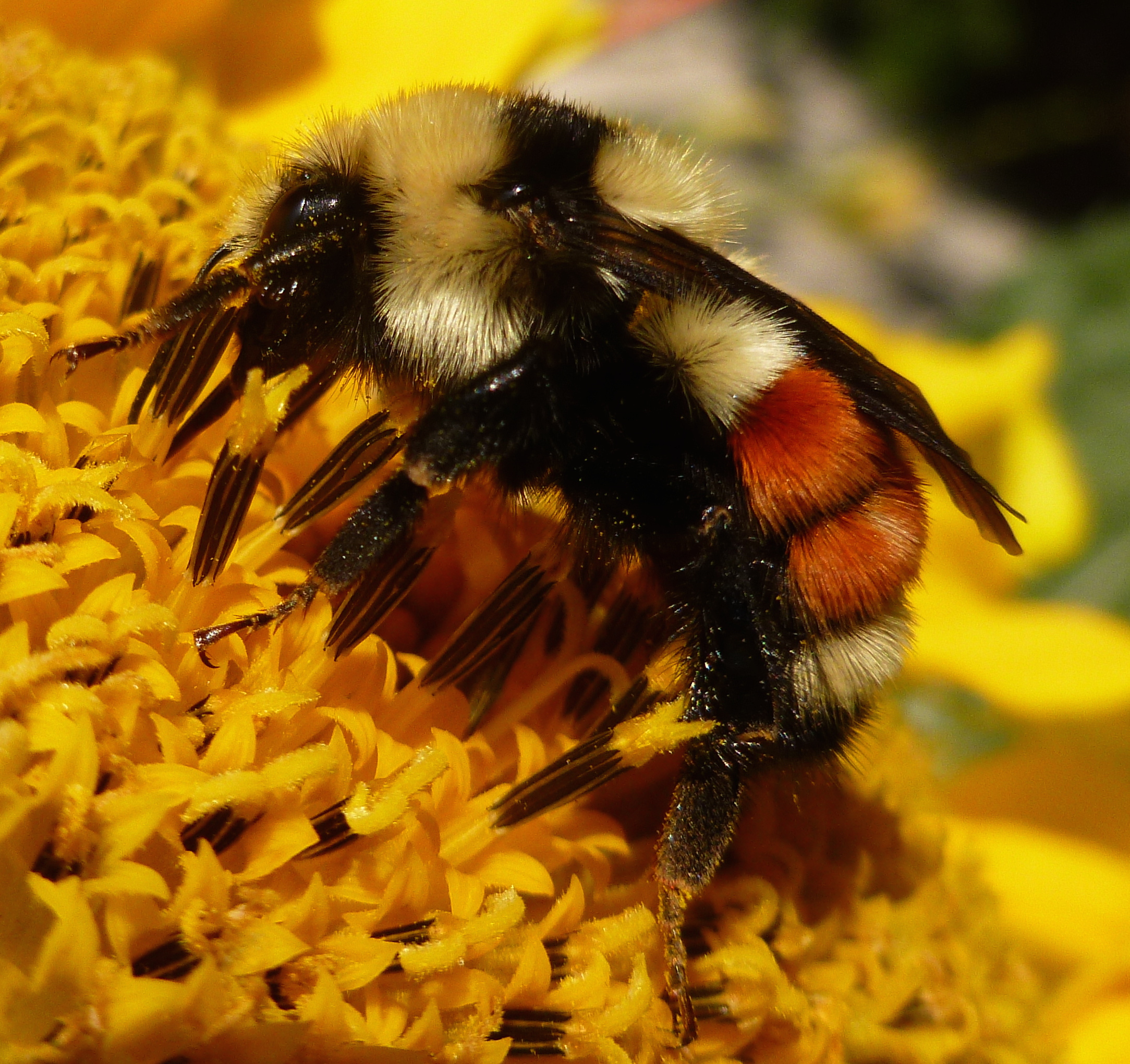Bumble Bees of Montana
Bombus (Pyrobombus) huntii Greene, 1860 Hunt Bumble Bee
Bombus huntii is a common western bumble bee known to inhabit the Rocky Mountains from the Sierra Nevada east to the Great Plains (Williams et al. 2014). It is the most widespread bumble bee known in Montana.
Montana Distribution: Records from Dolan et al. (2017) (gray) with correctionsand additional records added after publication (red).
Diagnosis
Bombus huntii has a cheek that is about as long as it is wide and a hair pattern of abdominal T1: yellow, T2 and T3: orange, T4: yellow, T5 and T6: black. Hairs on the face and on the thorax in front of and behind the wings are all yellow without any black intermixed. All hairs on the front coxae (first leg segment) are black.
Similar Species
There are three species that can easily be confused with B. huntii in Montana: B. ternarius, B. sylvicola, and B. melanopygus. Bombus ternarius can be found in many of the same habitats as B. huntii. It is distinguished from B. huntii by a line or triangle of black hair dividing the yellow hairs on the thorax behind the wings. Additionally, in B. ternarius, there is often yellow hairs on the front coxae and there is usually a circle of yellow hairs on the face near the antennal bases with black hairs intermixed around the edges. Bombus sylvicola is also very similar to B. huntii, though it is found at higher elevation sites than where B. huntii is typically found. Bombus sylvicola typically has long, uneven hair, a black line or triangle dividing the yellow hairs on the thorax behind the wings, and yellow hairs laterally on T5. Additionally, there is usually a yellow patch of hairs near the antennal bases. Bombus melanopygus is typically found in more forested, montane habitats than those of B. huntii. It has many black hairs intermixed with the yellow hairs on the thorax in front of the wings so that the thorax appears dirty or cloudy.


